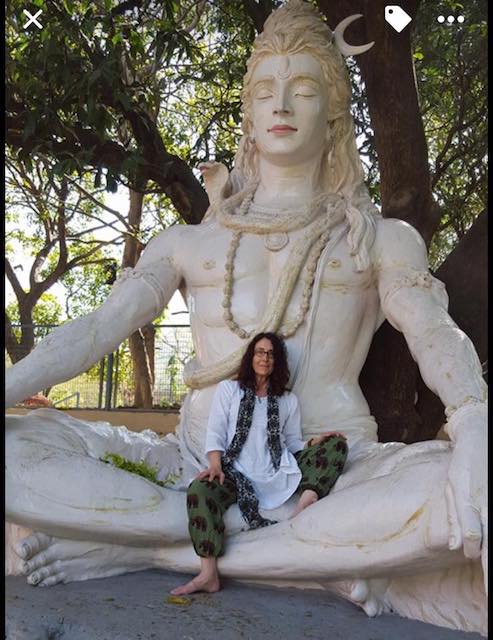Wouldn’t we all like to live in a space of being consciously aware and experiencing bliss?
Wouldn’t it be sweet to have this, rather than being pushed and pulled by all the externals (news, politics, TV, junk food, social media) in our lives?
Well, here’s the good news: We can do this through breath and mantra.
But first, let’s talk a little bit about the challenges we face in our daily lives that knock us off our center. I have come to believe that no matter who we are and no matter how picture perfect our lives may look from the outside, we all face challenges within our families.
Trauma, drama, abuses (self and other), they’re all a part of the tapestry that makes up most families. And so often our families of origin have left us with bruises and cuts to our own psyche, to our complex emotional and energetic landscape.
These wounds of family and self cause us to reach for peace and comfort outside of ourselves. “Give me something, please, to distract me from this stress, this pain, this heartache.” And so we reach for alcohol, drugs, junk food, social media, TV, movies, hypersexual activity, anything that can take us out of our distress, even if only for a few minutes.
Now we have salved the wound, but usually this “medicine” causes us more stress. We binge eat and then we beat ourselves up for what we’ve done. We watch the news and we become fearful of what our world has become and what the future brings. Our drinking or drug use becomes out of control and presents us with more health or social problems.
Most often the thing we are seeking the most is a moment of emotional peace. “You know I’d give you everything I’ve got for a little peace of mind,” as The Beatles used to say.
As a yogāsana (the physical practice of yoga) teacher, I teach breath practice for connecting to moments of peace.
A breath practice can be as simple as this: Tune into your breath and become aware of the rhythm of your breath. Deepen the inhales and exhales just a little so that your breath pattern becomes a slightly slower and a fuller. Now notice that there is a pause at the end of each exhale before the breath turns to become an inhale again. Notice this pause, rest in this pause.
This is a small space where we can find peace, and dare I say, find bliss in our daily lives. This is our respite from all the externals. This simple practice drops us from the sympathetic nervous system’s fight or flight response and deepens us into the parasympathetic nervous system where the pulse slows, the blood pressure drops, calming chemicals are released into our system, and we can find some comfort.
Once you’ve practiced this on your yoga mat, through the easy poses as well as the most challenging, you can now practice taking it out into your life—during the easy days as well as the most challenging.
You get a call from Uncle Robert who has always rubbed you the wrong way. Drop into your breath to calm down. You get caught in a horrendous traffic jam on the 405 when you’re headed to a meeting you can’t be late to. Use your breath practice.
If this feels nurturing to you and you want to expand this feeling further, I recommend a mantra meditation practice. As a Nāda Yoga (the yoga of sound) teacher, I have learned that mantra is a wonderful tool that brings us back from the externals and connects us to a sense of peace and calm.
As we attune to the vibrational sound of the mantra, as we attend to this with greater and greater subtlety, we begin the great journey inward that allows us to relax in the embrace of our true nature. And what is that true nature? It’s a place of peace, unconditional love, curiosity, empathy, a desire for collaboration, and inclusiveness. It’s your “bliss place.”
If you’ve tried other methods of meditation and they simply haven’t worked for you, you might try mantra. Chanting a mantra (a word or phrase, usually in Sanskrit, that is repeated, usually 108 times) gives the ordinary mind something to attach to. This breaks the habit of thinking “junk thoughts” which are connected to a predominately negative or judgmental inner dialogue.
A mantra practice slowly brings our hyperactive mind down to a place of inner stillness. And out of this stillness emerges the ability to tap into greater depths of creativity and the joyful expression of our deepest purpose in life; that state of Ānanda Śakti, the bliss of consciousness.
~
~
~
Author: Kathy Bolte
Image: Author’s Own
Editor: Travis May


 Share on bsky
Share on bsky





Read 0 comments and reply